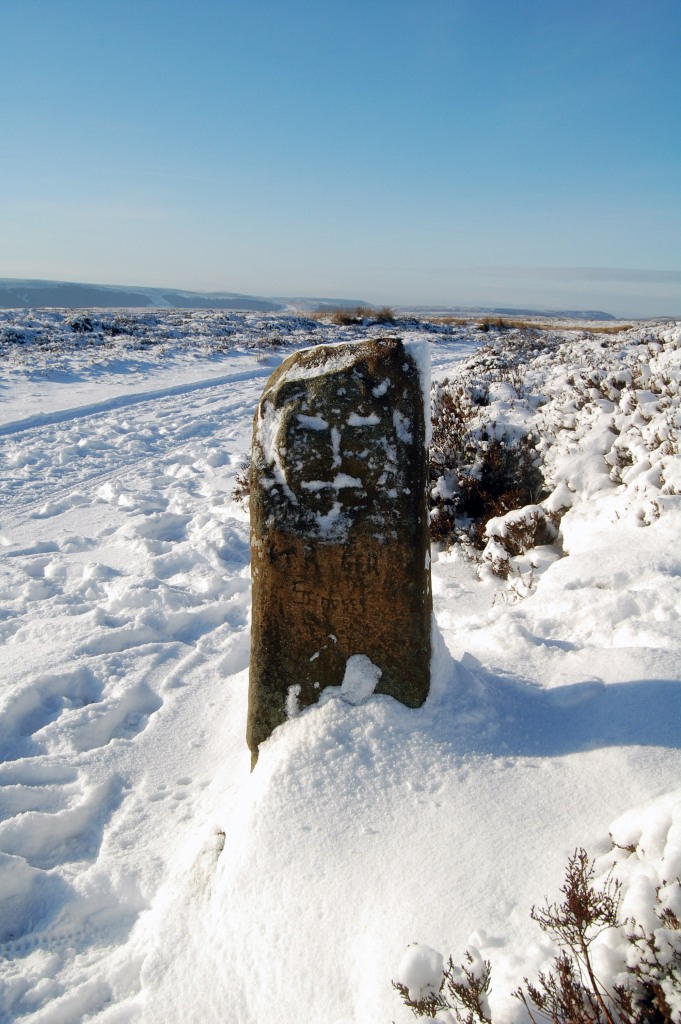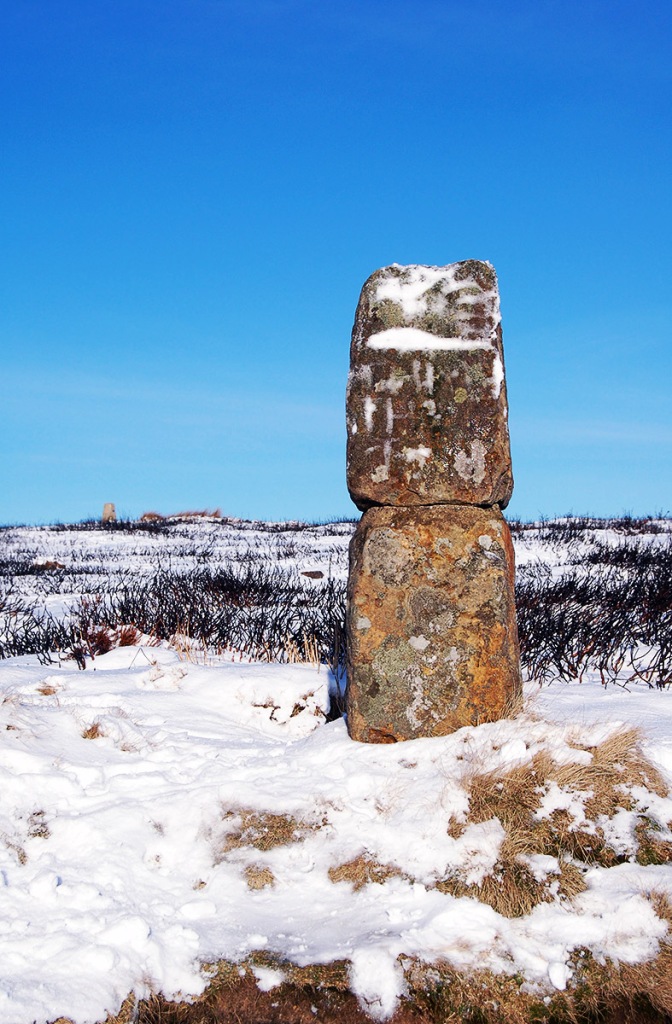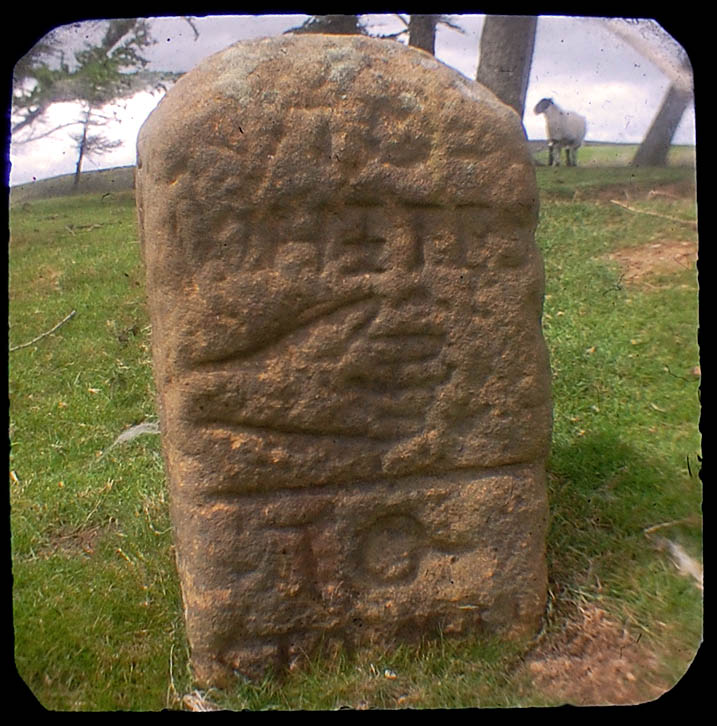Yesterday I realised that I’d recently written a blog post about manhole covers..manhole covers! I’ve had a fairly odd few weeks which have left me unable to venture to far from home, I needed to clear my head and for me the best way to do that is a mooch across an empty moor. I sent my good friend and co-conspirator Chris Whitehead a message, an hour and a half later we met in the car park of the Lion Inn on Blakey Ridge, our destination Harland Moor.
It’s a lovely drive down to Harland Moor we stopped briefly on Blakey Rigg to admire the beautifully carved handstone.
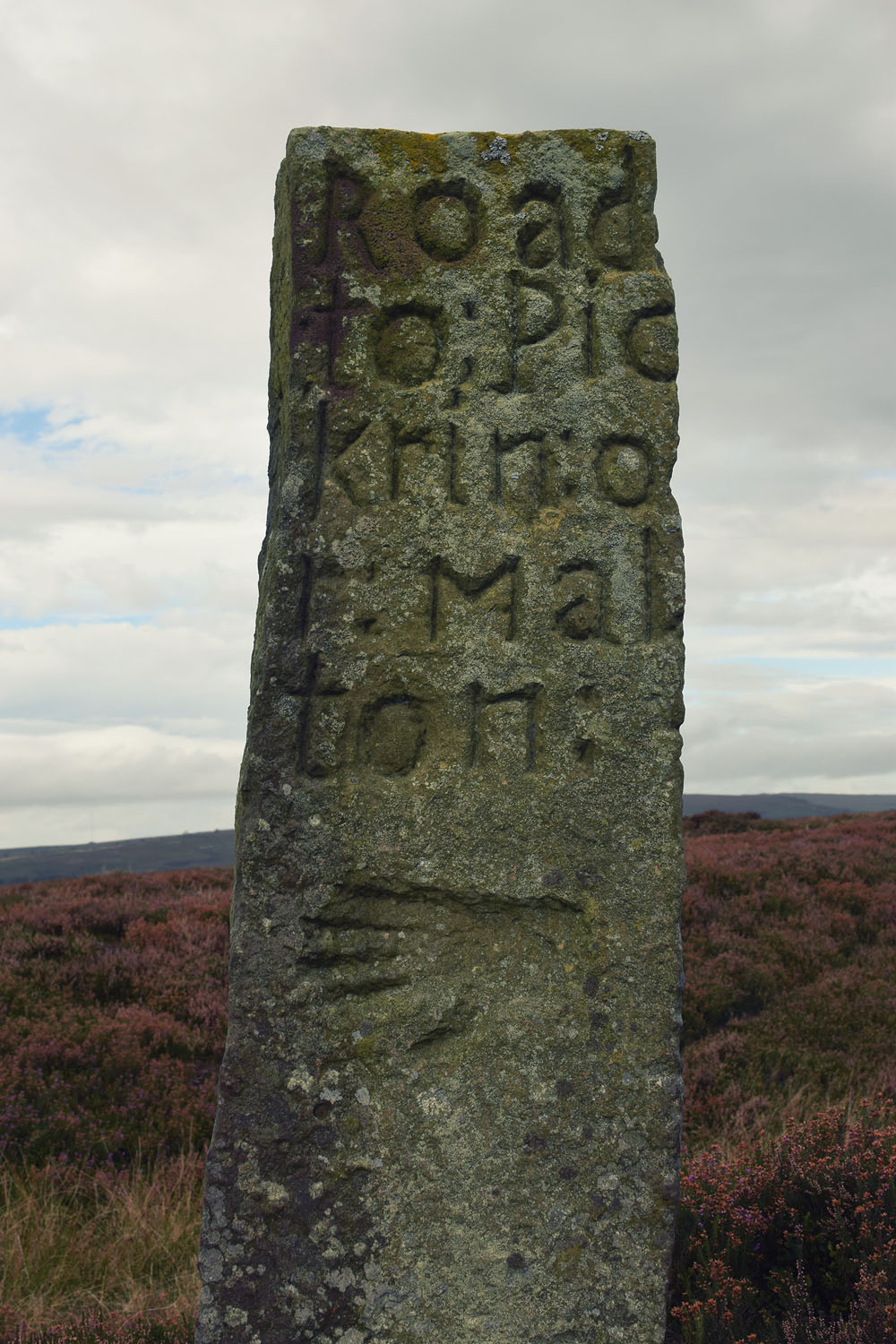
After dodging suicidal pheasants we arrived at the circle which is marked on the OS map as a cairn. The circle was discovered by W R Crosland in 1930 and was described as an embanked circle 70ft in diameter with upright stones set at intervals.
It had been at least a decade since I last visited the circle and remembered it as a rather ruinous place. I was surprised to find it quite recognisable, a slightly raised bank set with stones. The circle is bisected by a hollow way with dense heather and bracken in the northern and eastern quadrant, which made spotting the stones a little difficult.
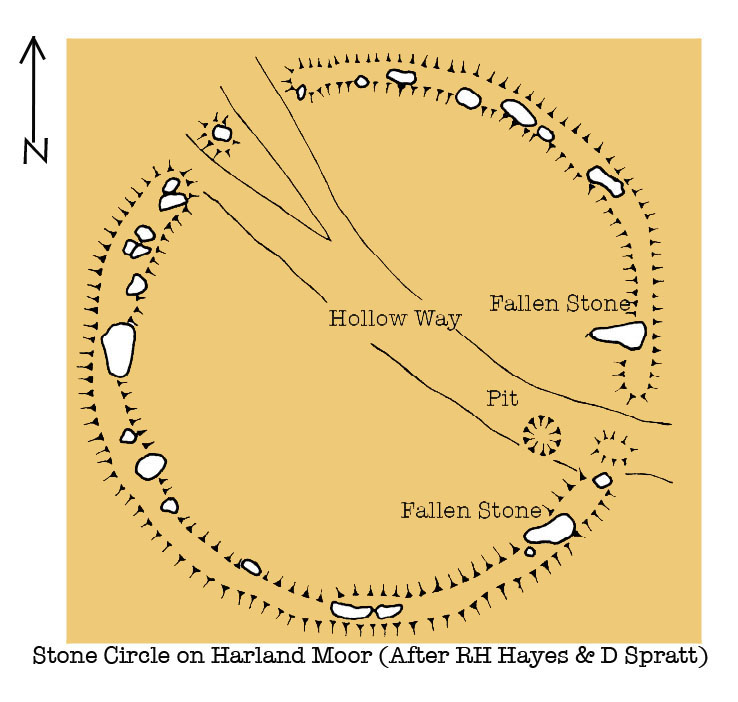
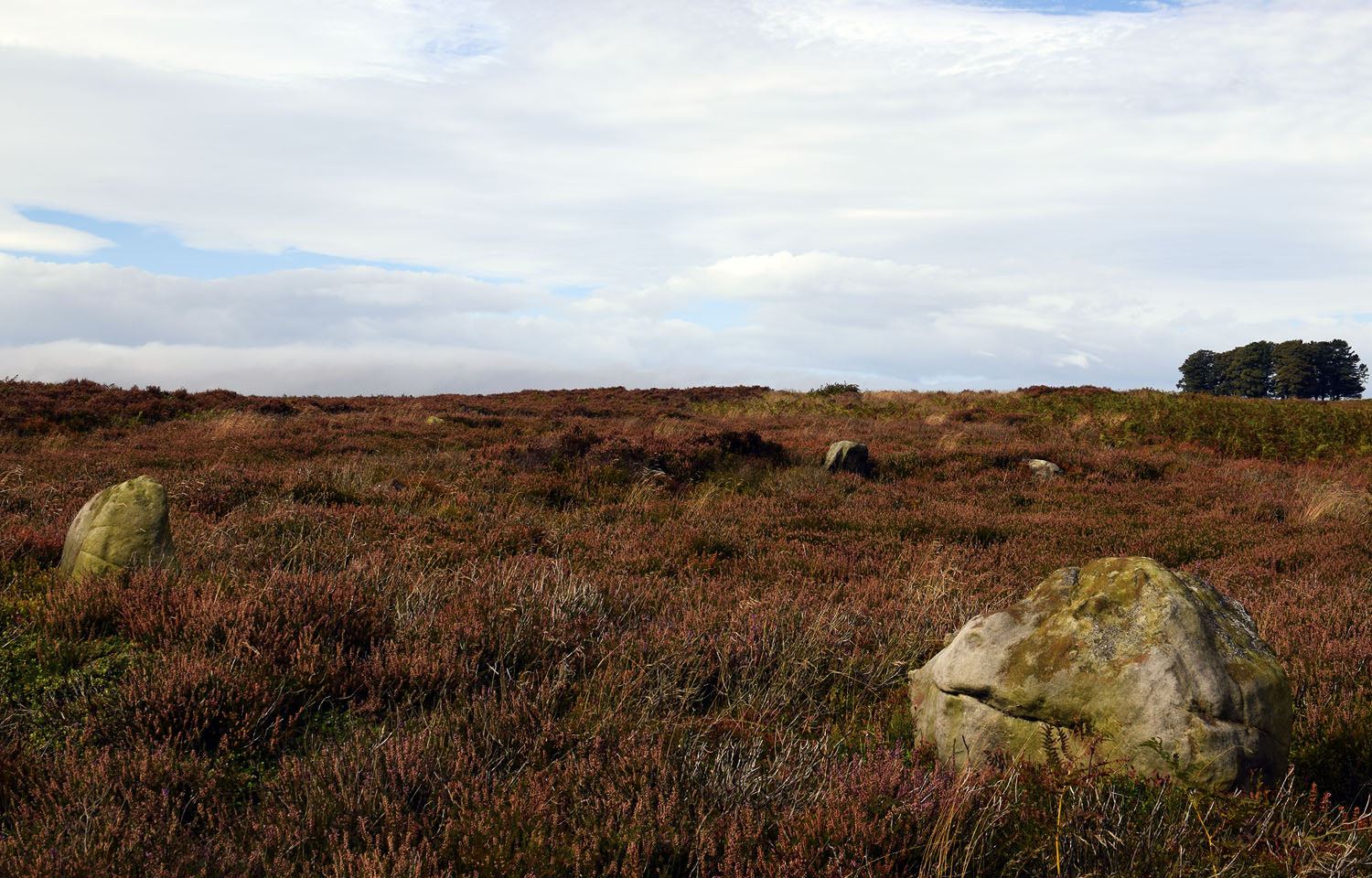
Britain’s foremost expert on stone circles, Aubrey Burl, gives the circle a classification of 3 (Ruined but recognisable), I wouldn’t argue with that. A few metres to the west of the circle there are a number of stones that may be the remains of prehistoric walling but are so ruined that it is hard to tell. Interestingly, the three stones in the picture below are aligned 130 – 300 degrees which roughly aligns to the winter solstice sunrise and summer solstice sunset for 2000BCE.

The main viewshed from the circle is to the south and west across the green tabular hills dipping down to the fertile Vale of Pickering below. The views to the north and east are of the golden brown high moors intercut with fertile green dales.
We decided to leave the circle, fortified by ripe, fat, sweet, juicy bilberries we headed north across the moor.
Sources
A History of Helmsley & Rievaulx & District. J. McDonnell 1963
Prehistoric & Roman Archaeology of North East Yorkshire. D A Spratt 1993
The Stone Circles of Britain Ireland and Brittany (Revised Edition). A Burl 2000
